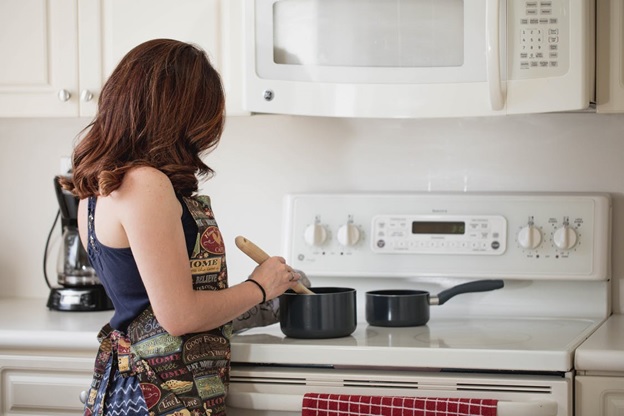People all over the world use electric stoves of some kind for cooking meals, especially in modern homes, without giving any thought as to how a stove really works. Well, at least until it stops working!
The truth is you can’t cook the scrumptious rib eye or boil water for your morning and evening tea, cook a healthy omelet for breakfast or grill some healthy green veggies if your electric cooktop burner refuses to heat up.
Let’s fan the flames of some necessary know-how about electric burners to help you understand how they work and what may have potentially gone wrong, causing the heat to halt your cooking right when you needed it the most!
What Makes An Electric Cooking Range Work?
- Electricity is delivered to a terminal block fitted inside your stove via three large wires connected to the power The electricity distributes to various components that operate specific features, such as heating elements, thermostats, heating coils, and more.
- Electric cooktops are equipped with insulated coils to create electrical and heat resistance that helps to achieve the desired temperature. They also include a radiant burner beneath the ceramic surface to distribute the heat evenly.
- Switches in burners control on and off function while thermostats regulate the level of required temperature.
- Smart infinite-heat burners are also available now. They pulsate power to heating elements according to the need, automatically maintaining the correct level of heat.
Why won’t My Electric Burner Heat?
Reason # 1: Electrical Short
When grease or moisture accumulates in the receptacle of plug-in burners, it can create an intermittent short, which may seem like a minor headache at first but will burn out the component eventually.
Reason # 2: Burnt or Loose Wire
Burning of the wire near the element is a fairly common occurrence. If it has been burnt, it’s easy to determine as burn marks are often visible. If not, check if the wire is loose and wiggle it back to the connection.
Reason # 3: Faulty Surface Switch
This switch is responsible for regulating the heating element’s voltage and controls how much heat is to be displaced to the coils. Once the element reaches the desired temperature, it shuts off the voltage. The cyclical process continues throughout the cooking time. If the switch is defective, it prevents the element, and the cooking range stops working.
Reason # 4: Burned Out Receptacle
Sometimes if the heating element is in good shape, a burned-out receptacle may be the culprit causing interrupted voltage. Inspect the contacts for signs of visible damage or burn marks.
Reason # 5: Faulty Element
When the switch sector knob is turned to control an element’s particular heat setting, voltage travels to the circuit, causes it to close, and makes the elements heating possible. Try to inspect the element for burns, breaks, or blisters in the coil to see what may have caused the component to malfunction.
The Next Step: Electric Stove Repairing
Leave the hefty work on the pros! Book reliable electrician services by RHK Electrical to get just about any electrical appliance repaired in Cypress, Texas.
Our expert electricians are trained to offer cutting edge LED services, generator maintenance services, lighting maintenance services, and other extensive range of commercial and residential electrical services, including complete rewiring, water heater, electric stove repairs, and surge protection, and more.
Reach out to us 24/7 at +1 832 948 6019 if you need an electrician for your home or office who can provide long-last, quick, and affordable solutions to all your electrical woes!



